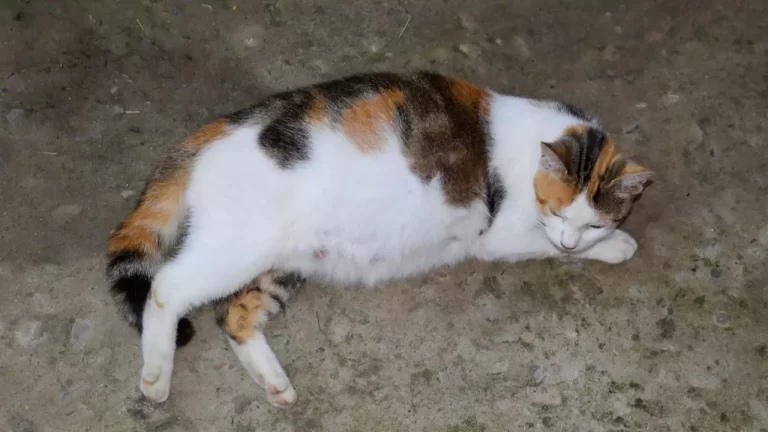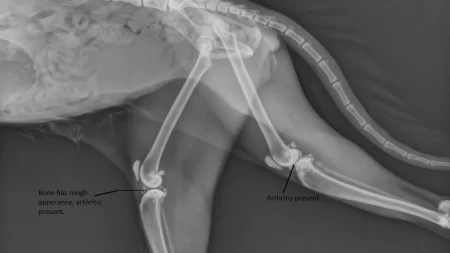If you have an unspayed female cat, you may wonder how long she will stay in heat. The answer is not straightforward, as it depends on several factors, such as the season, the breed, and the individual cat. However, a general estimate is that a cat will stay in heat for about a week, and repeat the cycle every two to three weeks until she is spayed or becomes pregnant.
In this article, we will explain what a cat’s heat cycle is, how to recognize the signs of a cat in heat, how to take care of a cat in heat, and how long you should expect your cat to stay in heat.
Understanding a Cat’s Heat Cycle
A cat’s heat cycle, also known as estrus, is the period when she is fertile and ready to mate. Cats are seasonally polyestrous, which means they have multiple heat cycles during the breeding season, usually from spring to fall. Cats are also induced ovulators, which means they only release eggs when they mate with a male cat.
The heat cycle in cats consists of four phases:
- Proestrus: This is a short phase (one to two days) when the cat’s body prepares for estrus. She may attract male cats, but she is not yet receptive to mating.
- Estrus: This is the main phase of the heat cycle, when the cat is receptive to mating and can become pregnant. It lasts for three to 14 days, depending on the cat. During this phase, the cat shows various signs of being in heat, such as vocalizing, rolling, rubbing, and lifting her tail.
- Interestrus or Diestrus: This is the phase between heat cycles if the cat does not mate or ovulate. It lasts for two to three weeks, and the cat does not show any signs of being in heat. If the cat mates and ovulates, she enters the diestrus phase, which is similar to interestrus, but with the possibility of pregnancy or false pregnancy.
- Anestrus: This is the phase when the cat is reproductively inactive and does not have any heat cycles. It occurs during the winter months, when the daylight hours are shorter. It lasts for two to three months, until the next breeding season begins.
Signs That Your Cat is In Heat
Cats in heat display a range of behaviors and body changes that indicate their readiness to mate. These signs are more obvious in the estrus phase, but some may also appear in the proestrus phase. The signs of a cat in heat include:
- Excessive and/or loud vocalization: The cat may howl, yowl, meow, or moan more than usual, especially at night. This is called “calling”, and it is a way of attracting male cats and expressing discomfort or frustration.
- Rolling on the floor and sticking her hindquarters up in the air: The cat may roll around on the floor, often with her back arched and her tail raised. This is called “lordosis”, and it is a posture that invites mating.
- Attention seeking: The cat may seek more affection and petting from her owner or other cats. She may rub her head, neck, and body against people and objects, and purr loudly. She may also lick or groom herself more than usual.
- Indoor cats trying to escape the house: The cat may try to find a way out of the house, such as through windows, doors, or pet flaps. She may also scratch or claw at the barriers that prevent her from escaping. This is because she wants to find a mate outside.
- Agitation or pacing: The cat may seem restless, nervous, or irritable. She may pace around the house, or change her sleeping and eating habits. She may also spray urine or mark her territory with her scent glands.
- Treading her back legs: The cat may tread or knead her back legs, as if she is walking in place. This is a sign of sexual arousal, and it may also stimulate ovulation.
The signs of a cat in heat typically last for about a week, but they may vary in intensity and duration depending on the cat. Some cats may have mild or subtle signs, while others may have strong or obvious signs. Some cats may have longer or shorter heat cycles than others.
Taking Care of a Cat in Heat
Cats in heat can be difficult to live with, as they may cause noise, mess, and stress for themselves and their owners. However, there are some ways to make the situation more manageable and comfortable for both parties. Here are some tips on how to take care of a cat in heat:
Provide a comfortable and quiet space
The cat may appreciate having a cozy and calm place to rest and relax, away from loud noises and distractions. You can offer her a soft bed, a warm blanket, a heat pad, or a warm towel to lie on. You can also play some soothing music or white noise to mask her vocalizations and calm her down.
Keep your cat indoors and supervised
The cat should not be allowed outside, as she may run away, get lost, get injured, or get pregnant. You should also close all windows and doors, and lock any pet flaps. You should also keep an eye on your cat, and prevent her from escaping or mating with any male cats that may be nearby or visible through a window.
Give your cat extra attention and affection
The cat may crave more attention and affection from you, as she is feeling lonely and frustrated. You can pet her, cuddle her, play with her, or talk to her gently. However, you should avoid touching her lower back or tail area, as this may stimulate her mating behavior and make her more agitated.
Consult your vet about spaying or other options
The best way to prevent your cat from going into heat and getting pregnant is to spay her. Spaying is a surgical procedure that removes the ovaries and uterus of the cat, making her infertile and stopping her heat cycles. Spaying has many health and behavioral benefits for your cat, such as reducing the risk of cancer, infections, and aggression. You can spay your cat as early as eight weeks of age or before her first heat cycle.
However, you should not spay your cat while she is in heat, as this may increase the risk of complications and bleeding. You should wait until her heat cycle is over, or until your vet advises you. If you are not ready to spay your cat, or if you want to breed her in the future, you can ask your vet about other options, such as hormonal injections or pills that can suppress or delay her heat cycles. However, these options may have side effects and are not as effective as spaying.
How Long Should You Expect Your Cat to Stay in Heat?
The length of a cat’s heat cycle can vary from cat to cat, but the average is about a week. However, this does not mean that your cat will be out of heat for the rest of the time. Your cat may go into heat again after two to three weeks, and repeat the cycle until she is spayed or becomes pregnant. This means that your cat may spend more time in heat than out of heat during the breeding season.
The duration of a cat’s heat cycle can be affected by several factors, such as:
- The season: Cats are more likely to go into heat during the spring and summer months when the daylight hours are longer. They may have shorter or fewer heat cycles during the winter months when the daylight hours are shorter.
- The breed: Some breeds of cats may have longer or more frequent heat cycles than others. For example, Siamese cats are known to have longer and more intense heat cycles than other breeds.
- The individual cat: Some cats may have longer or shorter heat cycles than others, depending on their genetics, health, and environment. Some cats may also have irregular or silent heat cycles, which are harder to detect.







